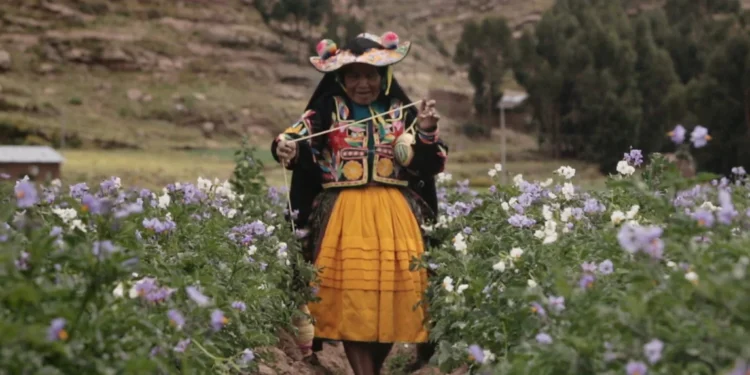As the US slowly strikes away from Christopher Columbus Day and the parable of Thanksgiving, we now have a possibility to be taught in regards to the historical past and modern lives of Indigenous individuals as a substitute. Movie and TV have formed a lot of our data of Indigenous cultures worldwide. And with the current recognition of mainstream movies like “Killers of the Flower Moon,” “The Territory” and TV exhibits like “Reservation Canines” and “Underneath the Bridge,” People have a renewed curiosity in understanding Indigenous cultures. Visible Anthropology has a protracted historical past of documenting native cultures, however solely within the final 50 years have filmmakers from these societies began documenting themselves by creating Fourth Cinema. Fourth cinema is media created by Indigenous individuals about their lives, usually exploring the consequences of Columbus and colonialism on their cultures. I lately traveled to Lima, Peru, to work with Indigenous director Alvaro Sarmiento and study his movies with individuals within the Andes and Amazon.
Sarmiento started working in documentaries greater than 20 years in the past in his grandparents’ village close to the mountains of Peru. His household is Quechua, however he realized about documentaries in Lima, the place he grew up. He and his brother began making movies by investigating the lead-contaminated water plaguing their village. Quickly after, they started their firm, HDPeru, which was devoted to documenting Indigenous cultural dances and traditions. Their quick movies element the injustices Indigenous communities face in Peru. Later, they explored historic and political points affecting international locations within the area, such because the Amazon, Brazil, and Ecuador, in characteristic movies.
The results of Christopher Columbus are nonetheless felt by Indigenous cultures to this present day, who are sometimes marginalized and compelled to stay between conventional territory and fashionable city residing. “Indigenous individuals nonetheless face lots of discrimination in day-to-day life,” Alvaro mentions as we search by way of books in downtown Lima. “Individuals do not at all times acknowledge us or see us as part of Peruvian society.”
Alvaro’s work is not only to doc Indigenous individuals’s issues however to analysis and higher perceive the historical past that led to their present situations. He seeks to seize the fantastic thing about the atmosphere and the real moments between his topics, that are hardly ever seen, simply as a lot because the tragedy that unfolds earlier than us. His work is influenced by experimental filmmakers akin to Agnes Varda and Peter Greenaway. By incorporating narrative movie strategies and reenactment, he can movie non-public or intimate moments we might not in any other case see. Academic exhibits akin to “Disappearing World” and “Nova” noticed native individuals with solely an outsider’s understanding of what they did or why. The work of Indigenous filmmakers like Alvaro challenges long-standing stereotypes with an insider’s data of cultural practices.

“It isn’t at all times straightforward to search out funding for initiatives about Indigenous points, and we do not at all times have as a lot as we’d like,” he says as we stroll down the road with the books we collected. The solar has set, however downtown stays shiny with lights. Though Peru presents public funding, it’s extremely aggressive, and worldwide partnerships and award funding are important to finishing a venture. Very similar to American filmmaking, it may be all about who you recognize. “Discovering dependable crew in distant areas just like the Amazon may be difficult,” he says. “However we construct partnerships with different native filmmakers to provide movies.”
He continues at his workplace, “If anthropologists such as you nonetheless wish to doc native cultures, they need to work with Indigenous filmmakers and comply with their lead.” His subsequent movie seems to be on the influence of rubber exploitation on the Indigenous individuals of Peru and Ecuador.
With movies like “Jazzy” (a spin-off of “The Unknown Nation“) premiering at Tribeca, and the documentary “Sugarcane” a couple of Canadian boarding college the place Indigenous kids had been abused and murdered receiving a theatrical launch, or “Lakota Nation vs. The USA,” in regards to the native motion to take the land again being out there on VOD, 2024 might be a groundbreaking 12 months for Indigenous filmmakers.
Ife Olatunji is a practising visible anthropologist specializing in observational cinema and longitudinal ethnographic fieldwork. As an Anthropologist, Ife has carried out comparative observational fieldwork in Brazil, Ghana, Dominican Republic, India, and most lately Nigeria.



















